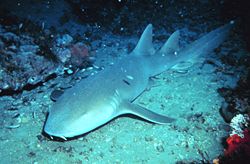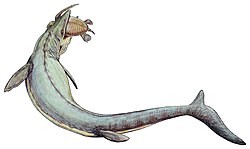| Muwaqqar Chalk-Marl Formation | |
|---|---|
| Stratigraphic range: | |
| Type | Geological formation |
| Underlies | Um Al'Rijam Chert-Limestone Formation |
| Overlies | Alhisa Phosphorite Formation |
| Lithology | |
| Primary | Chalk, marl |
| Other | Oil shales |
| Location | |
| Coordinates | 31°42′N36°30′E / 31.7°N 36.5°E |
| Approximate paleocoordinates | 14°54′N29°48′E / 14.9°N 29.8°E |
| Country | Jordan |
| Type section | |
| Named for | Al-Muwaqqar |
| Named by | M. Masri |
| Year defined | 1963 |
The Muwaqqar Chalk-Marl Formation or Muwaqqar Formation is a Late Cretaceous (Maastrichtian) and early Paleogene-aged geological formation in Jordan, cropping out across the Jordanian Highlands from north to south. It is the geological formation containing Jordan's famous oil shales, which are among the largest in the world. [2] [3] Some outcrops of the formation contain extremely well-preserved fossils, making it a lagerstätte. [4] [5]



















